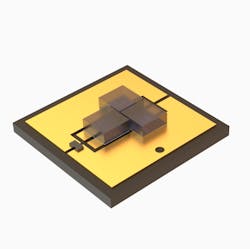With the coronavirus pandemic again surging around the globe, interest in ultraviolet (UV) disinfection in the UV-C band (100–280 nm) continues to grow, and new LED-based sources and systems are challenging legacy mercury lamps in many cases. Luminus Devices has announced the new XFM-5050 series of packaged LEDs that lower the cost relative to power by 20% relative to prior-generation components. Meanwhile, new modular or light engine UV-C solid-state lighting (SSL) products from ProPhotonix will enable product developers to more quickly deliver disinfection systems that can deactivate SARS-CoV-2 and other pathogens on surfaces and in air or water.
There are many questions about the efficacy of UV-C radiation in deactivating the virus that causes COVID-19, including the fact that it does deactivate as opposed to kill the virus, and we covered that ground in a recent column from the LESA (Lighting Enabled Systems & Applications) center team at Rensselaer Polytechnic Institute. Moreover, we ran an article detailing some Boston University research regarding UV-C efficacy specifically relative to SARS-CoV-2. If you need more background on germicidal UV-C, watch our foundational webcast on the topic that is available on demand.
UV-C LEDs
Of course, one theme that runs through the above resources is the fact that most germicidal UV-C systems today will rely on legacy mercury-discharge sources because UV-C LEDs are still in the early stages of maturity — meaning they offer relatively lower output power, higher cost, and shorter useful life. But as the column in the top link above makes clear, UV-C LEDs can now serve in an increasingly larger set of applications.
Luminus hopes to extend that range with the XFM-5050 that, as the names implies, has a 5×5-mm footprint. The company has increased the radiometric power or wattage output by integrating multiple emitters in a discrete surface-mountable package. The 2-, 3-, and 4-chip devices deliver 120, 180, and 240 mW of power respectively at nominal drive currents, radiating at 275 nm. Product developers can overdrive the devices with the 4-chip offering exceeding 400 mW. Of course, higher driver currents require more robust thermal mitigation and can decrease operating life just as with white-light LEDs.
“Effective UV-C applications require the right combination of wavelength, intensity, and reliability and the market requires all three at a cost that enables solutions adoption,” said Murali Kumar, director of specialty marketing at Luminus. “Earlier this year, we dropped the cost per milliwatt to $0.10 with the XBT-3535. Lowering the cost an additional 20% and increasing output comes just in time to support the rising demand for UV-C solutions.”
Modular UV-C engines
Modular products, meanwhile, can allow product developers a faster route to market and this coronavirus pandemic has demanded speed in everything from vaccine development to germicidal SSL. ProPhotonix, for example, is developing a modular portfolio including the Cobra Clean FX1 UV-C modules. The products radiate at 265 nm, and are packaged in a 125.6×76.8×28-mm (about 5×3×1.1 in.) enclosure that looks something akin to an old 3.5-in. PC disk drive.
The modular product apparently radiates out of the front 3×1.1-in. emitting surface, delivering a somewhat linear beam pattern. The form was evidently influenced by products the company has produced in commercial UV curing, and the intended application configuration is close to a surface or perhaps water that needs to be disinfected, although ProPhotonix said it can also be used for air disinfection.
The performance of the LED-based product is specified at a working distance of 2 mm. At nominal drive current, the module delivers peak irradiance of 55 mW/cm2 and peak energy dose of 65 mJ/ cm2. Referring to the Boston University research linked above, the performance specified by ProPhotonix would suggest you could utilize the product at far greater distance than 2 mm and still realize the ability to deactivate the coronavirus quickly.
ProPhotonix began to transition away from mercury UV sources all the way back in 2013 due to environmental concerns, and now the company can offer effective germicidal designs with LEDs. “The work in UV-C lamps at ProPhotonix began several years ago out of concepts on the matter of neutralizing pathogens at commercial scale,” said Ken Reynolds, business and technology manager. “We are now working with and seeking partners in the collaborative design, development, and manufacturing of novel UV-C LED-based products for market adoption.”
The box-like modules can be stacked in some system configurations. And an active cooling systems helps support the relatively high power output.
For up-to-the-minute LED and SSL updates, why not follow us on Twitter? You’ll find curated content and commentary, as well as information on industry events, webcasts, and surveys on our LinkedIn Company Page and our Facebook page.






